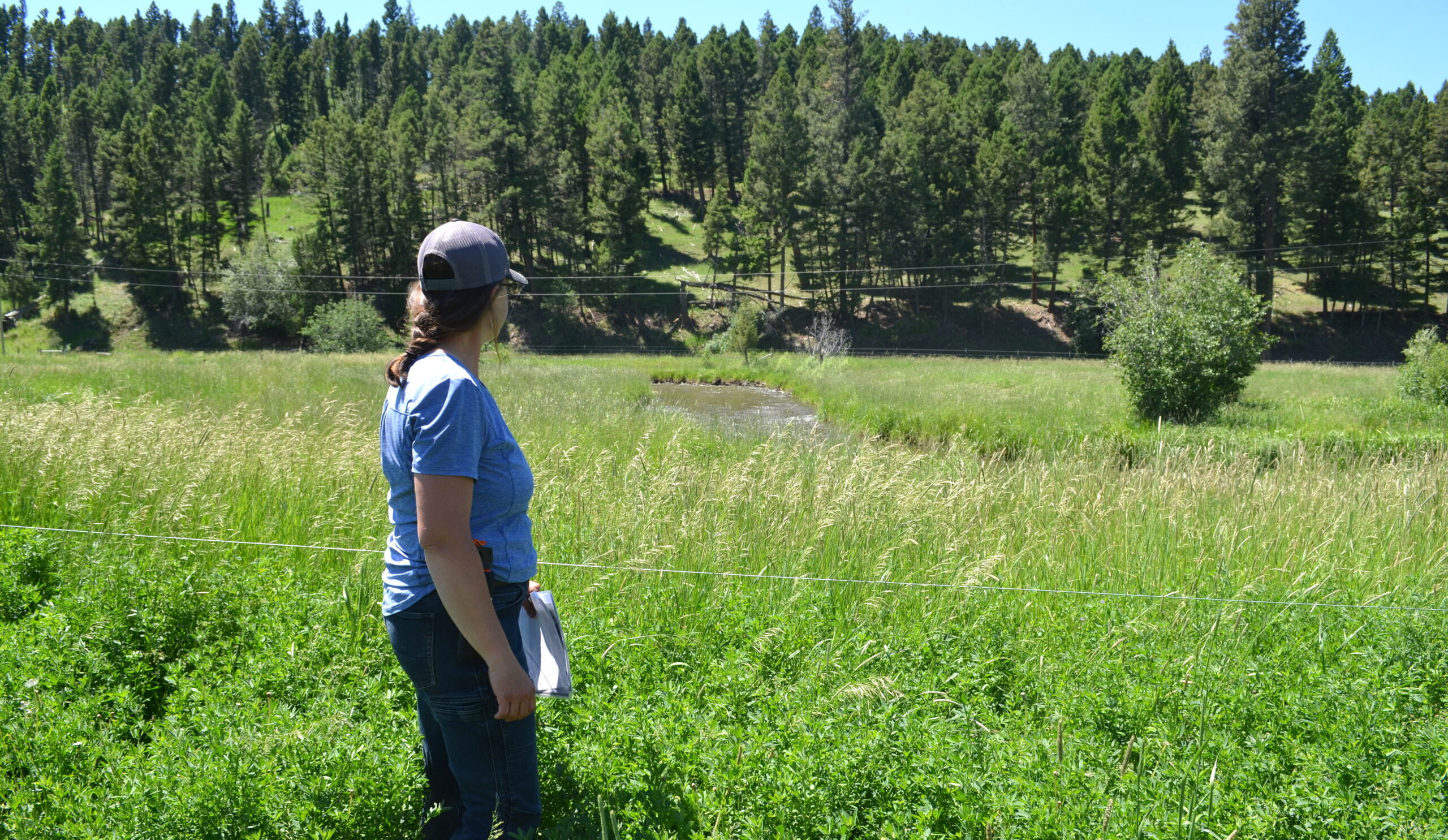Montana’s Cooper Creek Ranch Balances Restoration with Business
“We’re just trying to leave our land a little better than it was when we got it, just like every generation should.”
Jamie Stitt, owner-operater, Cooper Creek Ranch
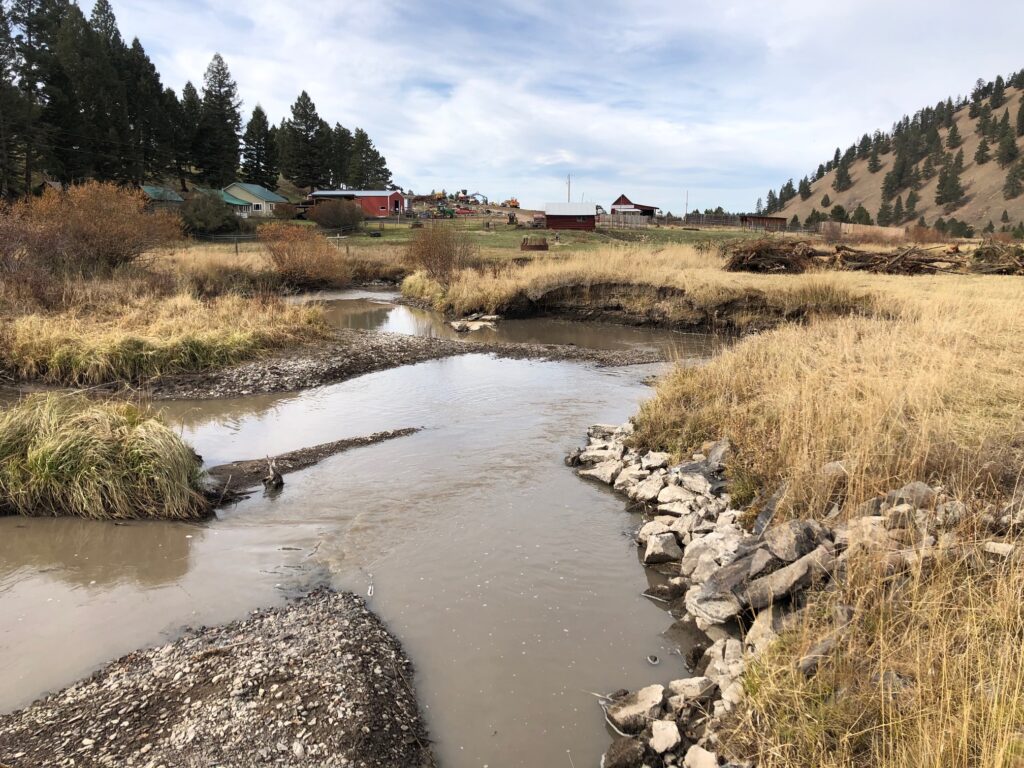
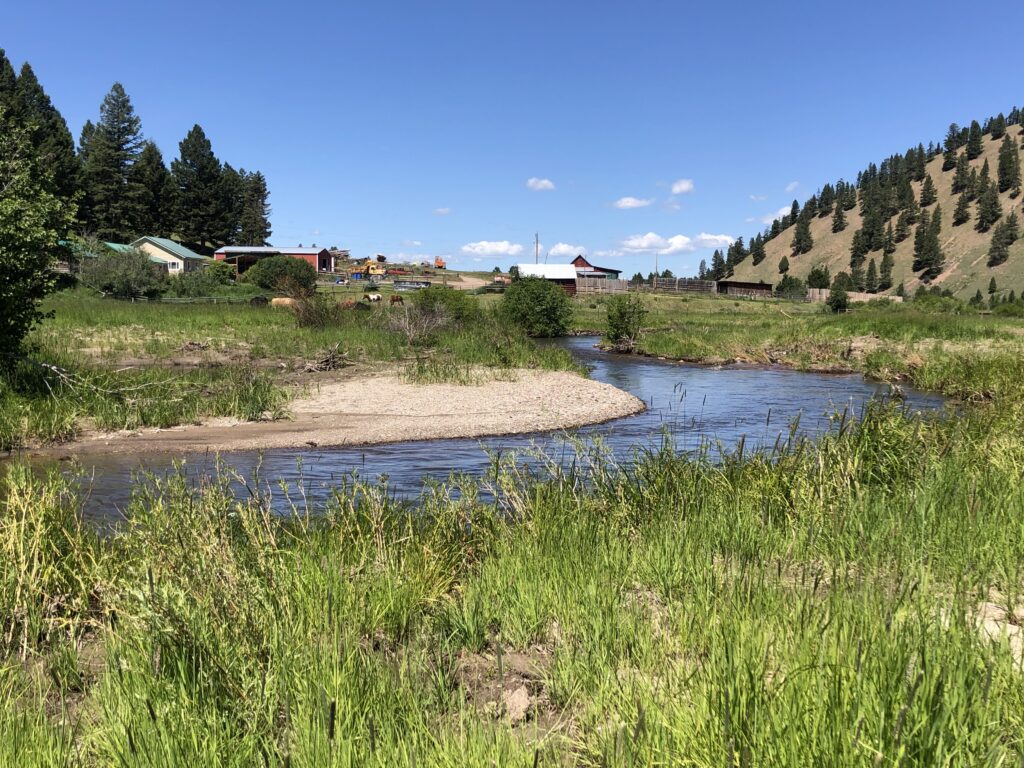
Streambed restoration done on Cooper Creek Ranch in partnership with the Big Blackfoot Chapter of Trout Unlimited helped clear sediment from the creek and return it to its historic meandering pattern. Photos courtesy of Ryen Neudecker.
Just outside of Helmville, Montana, a lush field of alfalfa is radiating humidity into the air of what’s promising to be a hot summer’s afternoon. Jamie Stitt, the operator of Cooper Creek Ranch, is looking out at a patch of purple-flowered thistles in the middle of the field, wondering if she can cut the alfalfa for hay before the weeds go to seed. She said she’s been experimenting with cover crops and a no-till system in several of her pastures. Elsewhere, she’s seeded radishes and peas to curb weeds like the thistles and improve soil health. In this particular field, she planted oats in with the alfalfa last year to pretty good results.
“It helped the alfalfa get established and then we came in and grazed it all off to push the stems down with hoof action,” she said. “We’ll do that until we can finally get rid of the weed issue we have.”
The weeds may have Stitt’s attention at the moment, but cover crops are far from the only thing she’s doing to improve Cooper Creek Ranch, a family-run cow-calf and heritage hog operation. Her pastures are crisscrossed by the cold, clear waters of Nevada Creek—a significant tributary to the Blackfoot River and a major source of water for much of the ranchland around Helmville. In 2019, Stitt partnered with the Big Blackfoot Chapter of Trout Unlimited (BBCTU) to restore several sections of the creek on her property where channelization was eroding the bank and Stitt’s pastures, as well as driving the water table down. Ryen Neudecker, BBCTU’s Project Coordinator, said that they approached Stitt as part of a larger effort to restore fish and riparian habitat on Nevada Creek that began in 2010. As they made progress slowly down the creek from the Nevada Reservoir, cooperating with landowners along the way, Stitt heard wind of what was going on and came to see if the work would be beneficial for her property.
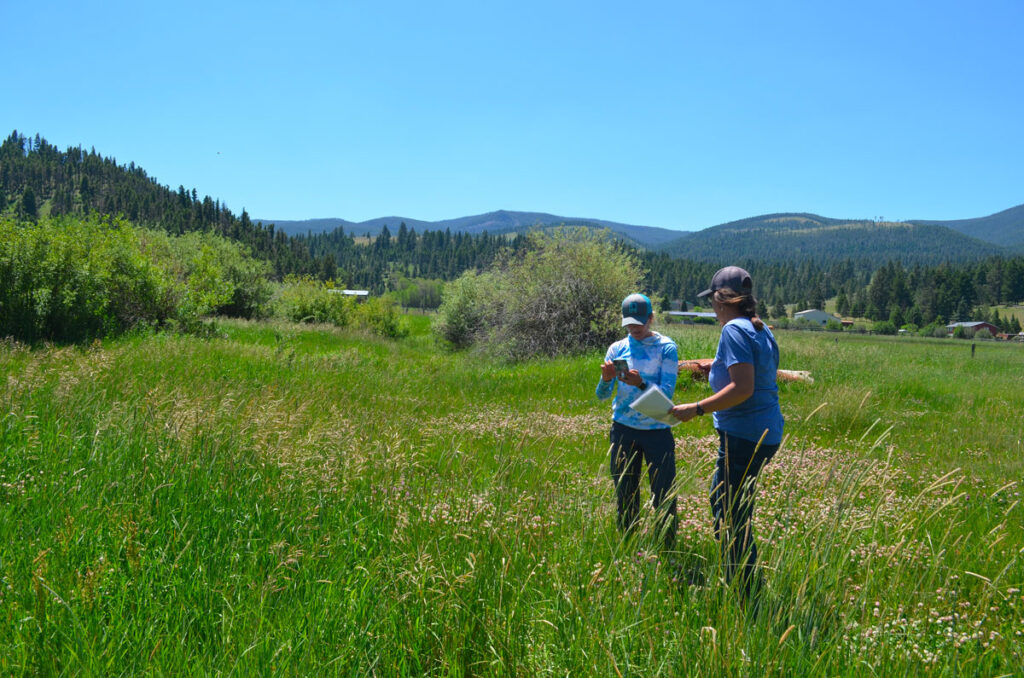
“When we were working on phase two in 2017, Jamie came out and watched what we were doing,” Neudecker said. “[Cooper Creek Ranch had] some major eroding banks and some threats of avulsions where the channel was going to keep cutting, and they had lost part of their ranch road access.”

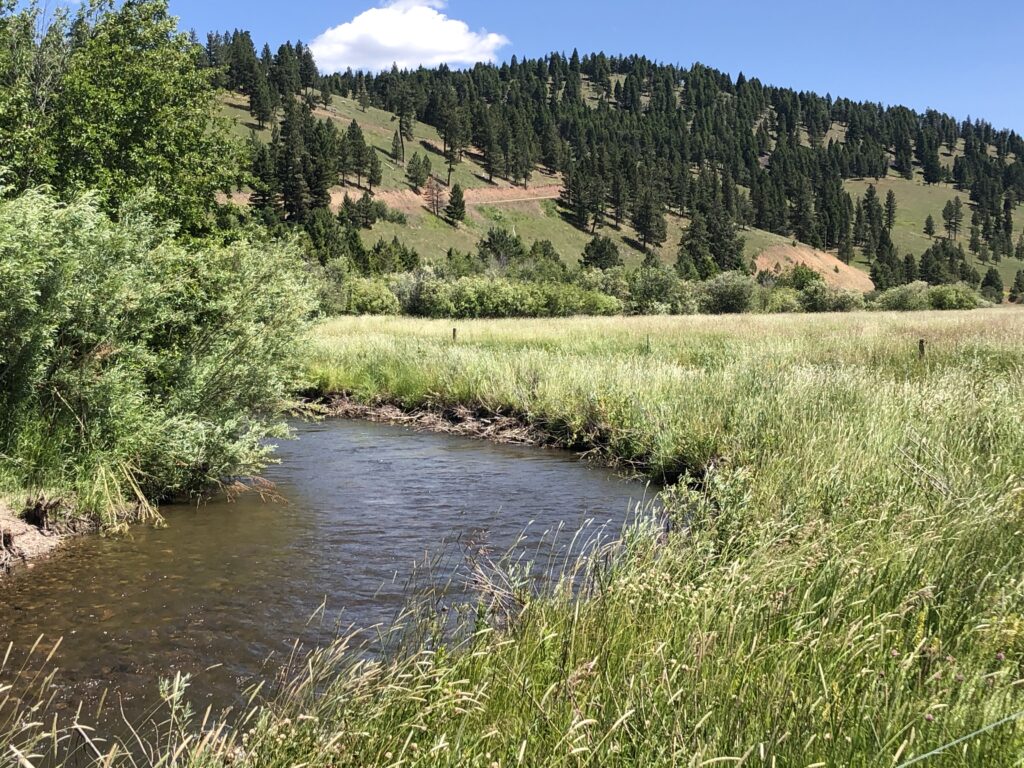
Before and after photos show how streambank erosion was greatly reduced by using woody debris from forestry work done on the property to reinforce the banks among other techniques. Photos courtesy of Ryen Neudecker.
For the Stitts, participating made sense. The goal for the restoration work was generally to slow the waters of Nevada Creek down as it wound its way through the valley, and in doing so, turn back the clock on the erosion and downcutting impacting so many of the area’s ranchers (and that silted important spawning habitat for native trout in the stream). Slowing the water down, said Stitt, was something that people had been trying to do for years, but didn’t necessarily have the means to do properly.
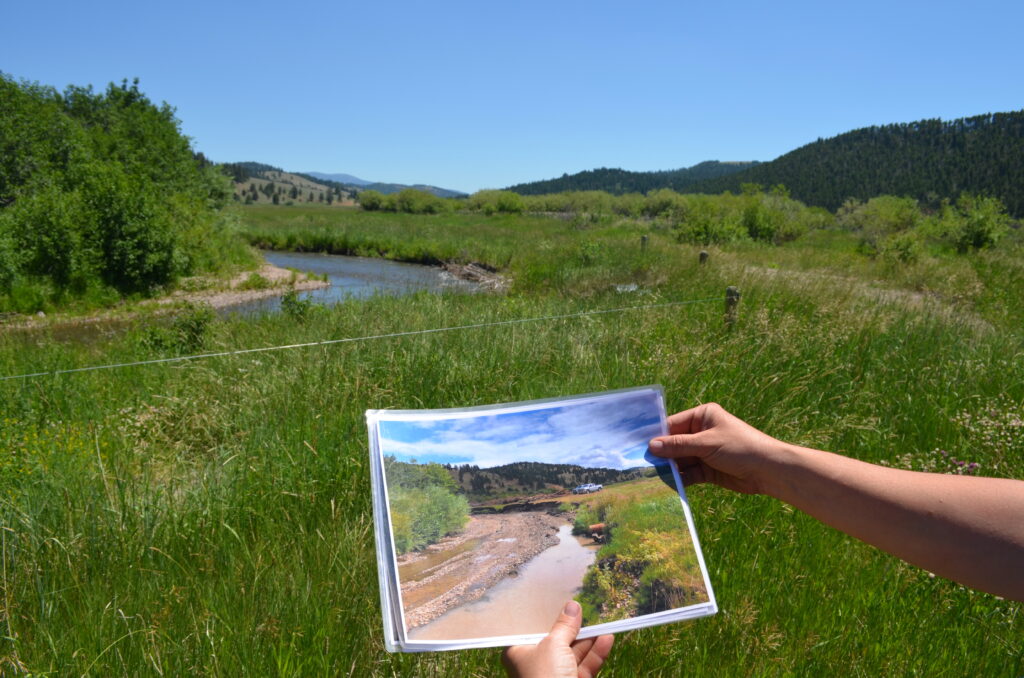
Prior to working on Cooper Creek Ranch, BBCTU worked with Stitt’s in-laws just upstream on the nearly two miles of Nevada Creek flowing through their property. When it came time to work with Stitt, they were able to take many of the methods used in that phase of the project and apply them to her property. These methods included rerouting the stream with heavy machinery to re-create the creek’s historic meanders, as well as stabilizing the banks with willow plantings and woody debris from forest restoration work Stitt’s husband was completing on their property.
Nearly two years later, the improvements are already visible. As part of BBCTU’s monitoring efforts, Neudecker took several before/after photos (see below) of project sites on Stitt’s property. The difference is astounding. What were once downcut banks and silty side channels are now lush, vegetation full creek banks—with water filled clear to the brim. Neudecker said it’s meeting the project goals and making it possible for the Stitt family to not have to worry as much about the stream. Stitt said her family has noticed wetter, more productive pastures across her land.
“There’s a horse pasture just below the house and it’s never been so wet. It’s because the bottom of the creek channel has been moved up.”
Jamie Stitt
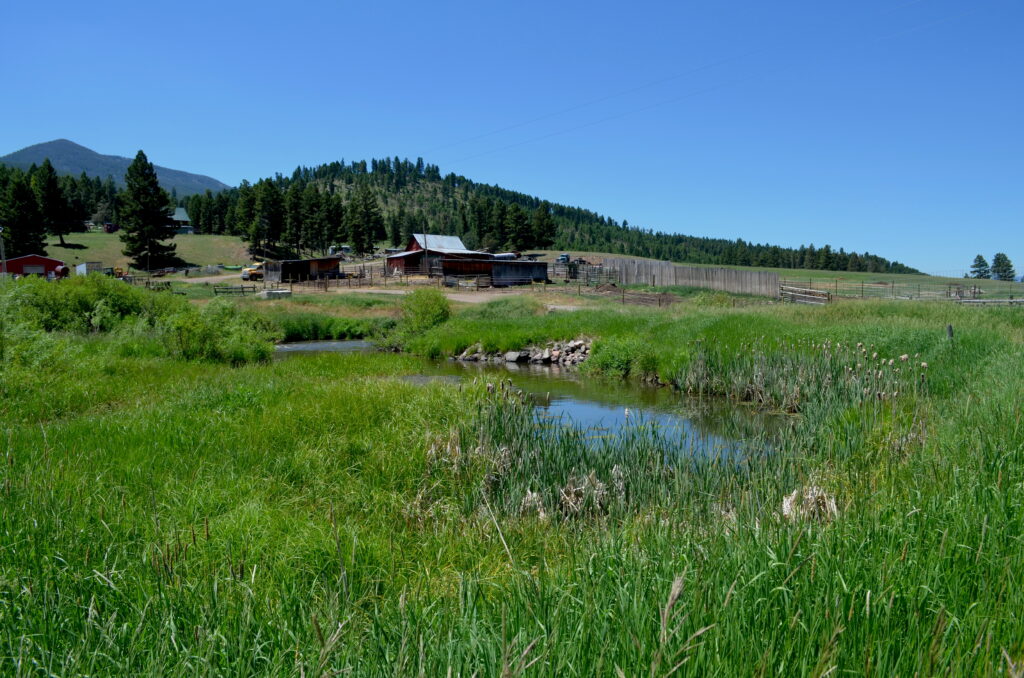
Although Stitt admitted it was chaotic having BBCTU and the project contractors running around her land for the weeks it took to implement the restoration, she said it was worth it in the end. The creek is better off, and so are her hay meadows, her cows, and her business. As a rancher, she is well acquainted with hard work and the fact that it does, occasionally, add up over time.
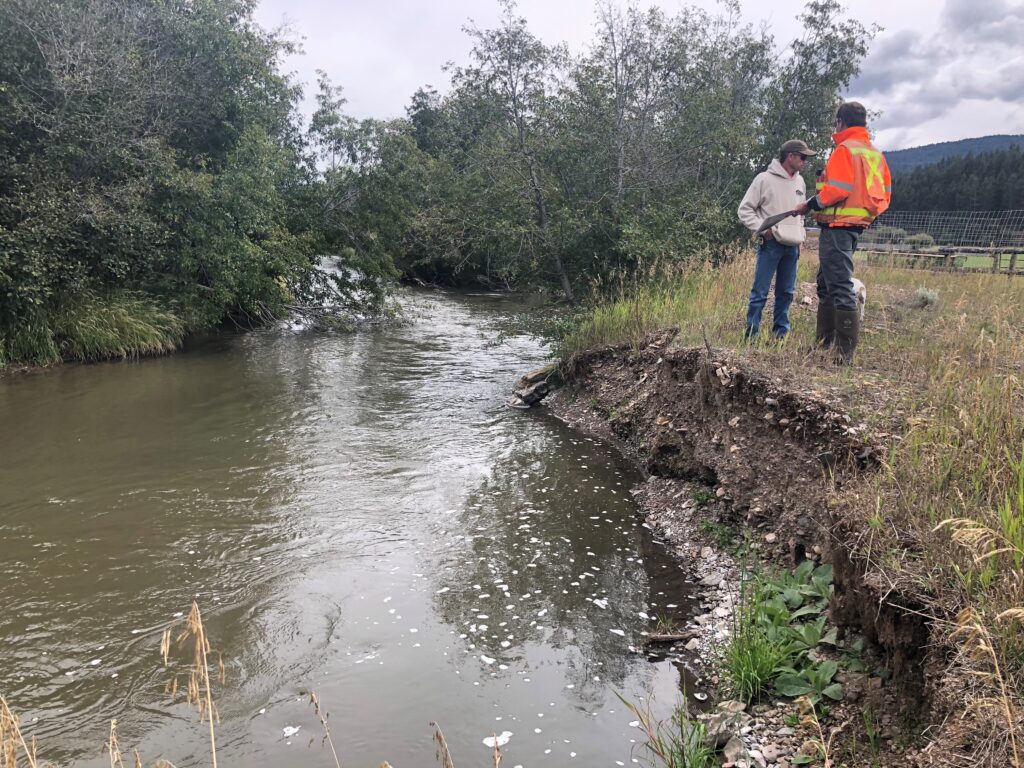

Downcut banks were stabilized with woody debris from onsite forestry operations as well as willow plantings. Photos courtesy of Ryen Neudecker.

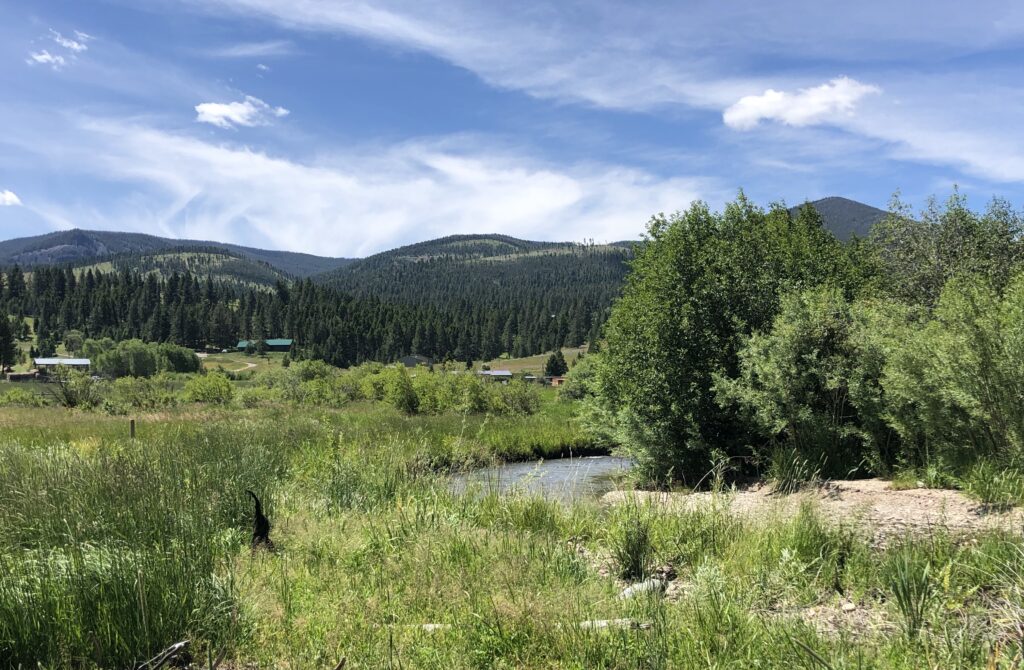
“The pre- and post- bank erosion monitoring is pretty neat, just to show the decrease in land lost and what that means for Nevada Creek and for protecting these fields,” Neudecker said. Photos courtesy of Ryen Neudecker.
“It always pays off in the end, even though it can sometimes be stressful in the planning and the beginning process.”
Jamie Stitt

This project was made possible through the collaborative work of Cooper Creek Ranch, USFWS Partners for Fish & Wildlife Program, MT Fish Wildlife & Parks, MT DEQ 319 Program, Blackfoot River Fund-Log Jam Presents, Westslope Chapter Trout Unlimited, River Design Group, Jessop Lodge, Blackfoot Challenge, Montana Watershed Coalition Council, Montana Trout Unlimited, Bring Back the Natives, Greenwing Restoration, and TNT Excavating.
